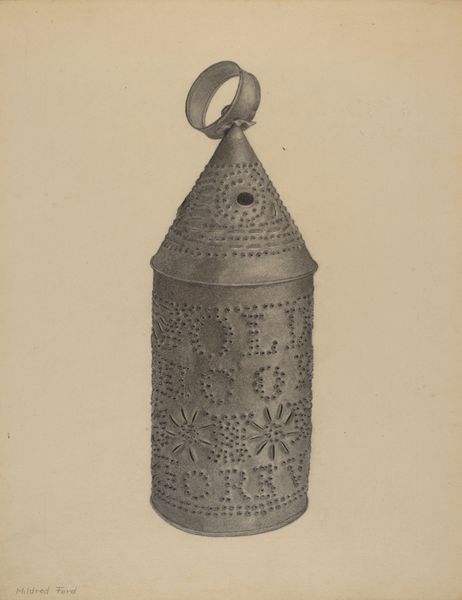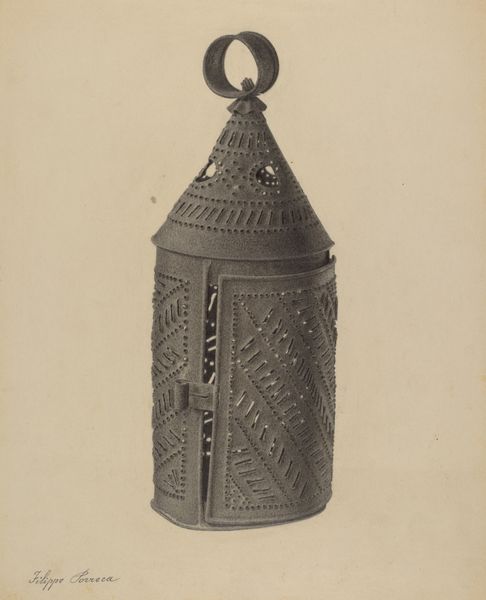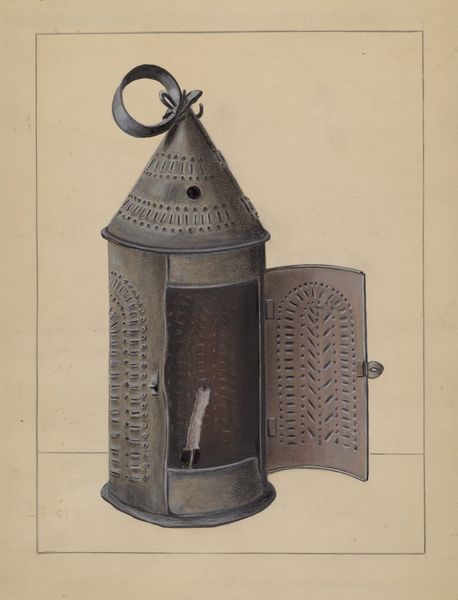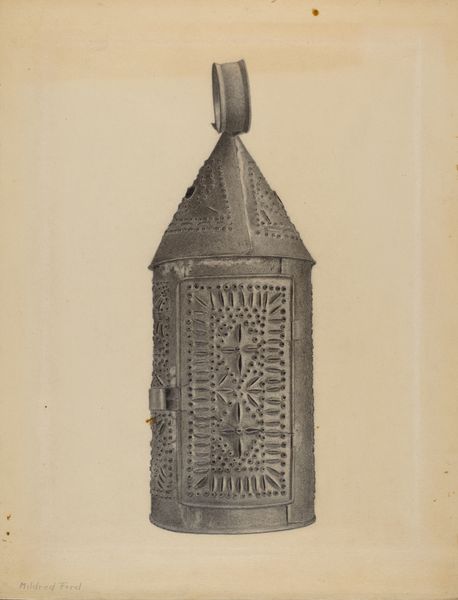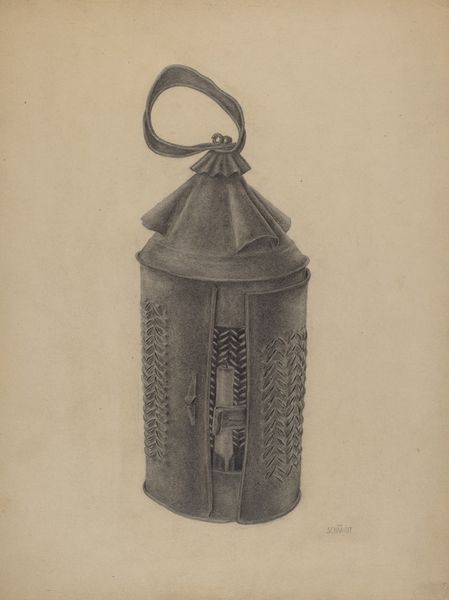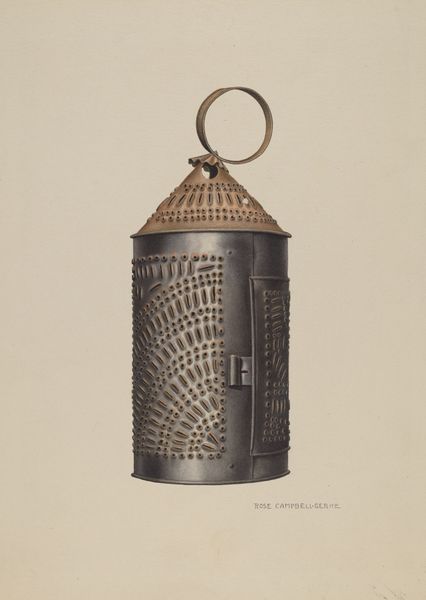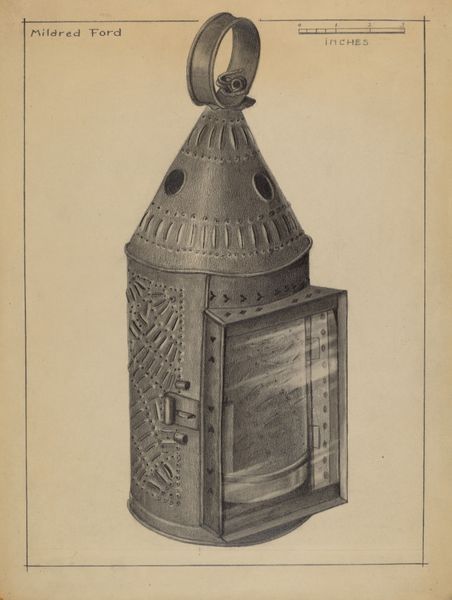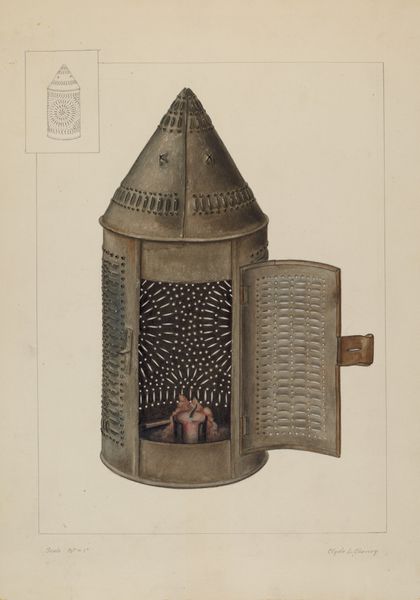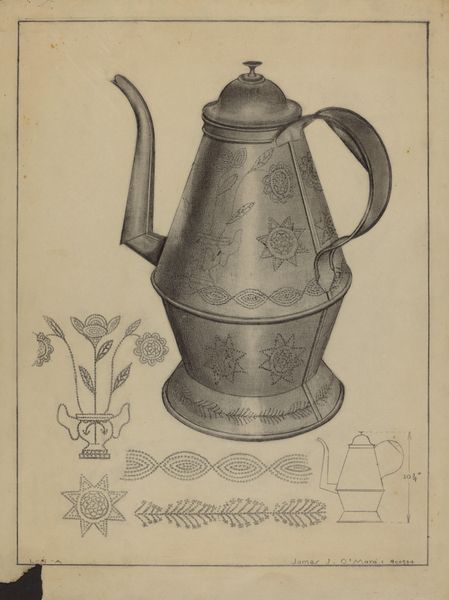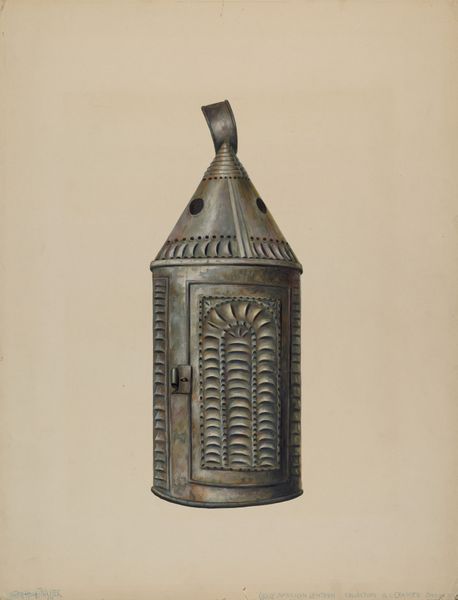
drawing, paper, pencil
#
drawing
#
paper
#
pencil drawing
#
pencil
#
academic-art
Dimensions: overall: 28.8 x 22.5 cm (11 5/16 x 8 7/8 in.) Original IAD Object: 17" high
Copyright: National Gallery of Art: CC0 1.0
Curator: Mildred Ford's pencil drawing, simply titled "Lantern," created around 1936, presents a meticulously rendered depiction of an antique lantern alongside detailed design drafts. My initial impression is one of quiet domesticity, a yearning for simpler times. It reminds me of hushed evenings and the soft glow of handmade objects. Editor: I see what you mean about the "domesticity" angle. But I'm immediately struck by the visual evidence here of material culture: not simply the lantern itself, but how that object communicates communal values via design. The geometric patterns etched into the lantern's metal seem almost like a language unto themselves. What do these visual components signify? Curator: Precisely! That's the appeal. The star motifs, for example, resonate across cultures, often symbolizing hope, guidance, or even divine connection. Consider that during this period, the rise of mass production threatened traditional crafts. This meticulous rendering may well represent an attempt to preserve—and enshrine—handmade values, even a unique identity through symbolic form. Editor: It’s almost a form of visual storytelling in itself, isn't it? These aren't just random decorative flourishes; they carry cultural memory. The way she isolates design elements in adjacent panels also seems very deliberate, almost a museum catalog in graphite! Was she involved in preserving, collecting, or researching these kinds of folk objects? Curator: I think you’re on to something. Although we don't have extensive biographical details on Mildred Ford, her work suggests a deep interest in material culture. Notice the level of detail she renders not only the overall shape, but also captures tiny textures and imperfections that reveal clues about the object's creation and usage. Ford prompts us to appreciate the labor embedded within such handmade objects, inviting reflection on the contrast to increasingly homogenized industrial products. The emotional power of owning a “unique” handmade object speaks volumes to its owner! Editor: Ultimately, what begins as an apparent, plain, utilitarian object – "Lantern," the title says – it evolves into a kind of a profound document concerning design, craft and communal symbolism. I find myself reflecting not just on what's represented, but the very act of representing it, drawing and immortalizing such heritage! Curator: Indeed. It also sparks contemplation on the ways that even ordinary household objects acquire—and retain—meaning across generations, functioning as symbols, carriers of emotions, even cultural values.
Comments
No comments
Be the first to comment and join the conversation on the ultimate creative platform.
